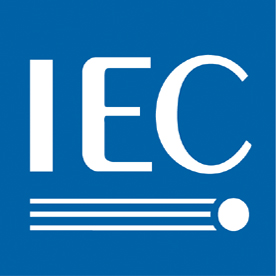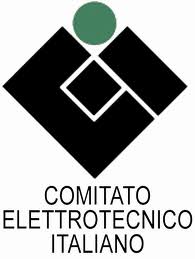Introduction
The purpose of this article and those that follow is to discuss the issues relating to electrical safety from design to maintenance. In this article we talk about the basis of the legislation and regulation of the electrical safety. The safety of people and things can not be separated from the rules and laws which must be interpreted and applied correctly. Before discussing the technical issues of electrical safety I need to properly address the legal rules that elect the security against accidents as a right of all citizens and workers in particular.
Legislative sources
The first source of legislation is the Constitution (here the english version), where you can read:
- art.32: “The Republic safeguards health as a fundamental right of the individual and as a collective interest, and guarantees free medical care to the indigent…”.
- art.35: “The Republic protects work in all its forms and practices…”.
- art.41: “Private-sector economic initiative is freely exercised. It cannot be conducted in conflict with social usefulness or in such a manner that could damage safety, liberty and human dignity…”.
The Civil Code provides:
- art. 2050: “Whoever causes harm to others when performing a dangerous activity, by its nature or the nature of the means used, is liable to pay damages if he does not try to have taken all appropriate measures to avoid the damage.”;
- art.2087: “The employer is required to take, in the exercise of the company, the measures according to the particularity of the work, experience and technique. These measures are necessary to protect the physical integrity and moral personality of workers”.
The Penal Code states:
- Art.437: “Anyone who fails to put installations, equipment or signal designed to prevent disasters or accidents at work, removes or damages them, shall be punished with imprisonment from six months to five years; if the act results in a disaster or an accident, the punishment shall be imprisonment from three to ten years”.
An innovative precept was introduced with the art. 9 of the law 20-5-1970 n. 300, known as the Workers’ Statute: “The workers, through their representatives, have the right to control the application of the rules for the prevention of accidents and occupational diseases, and to promote research, development and implementation of all necessary measures to protect their physical integrity”. The Dlgs 09/04/2008 n.81, known as “Consolidated Law on Health and Safety at work” shows the general and special prevention of accidents and occupational hygiene. The text in the title III art. 80 specifically deals with the electrical risk. Among other provisions of law relating to electrical safety in the workplace, the DPR 22/10/2001 N.462 is particularly important. (Rules to simplify the procedure for reporting of installations and equipment for protection against lightning, grounding devices of electrical installations and of dangerous electrical systems). In the electrical sector, the law 186 of 01.03.1968 is of fundamental importance “Regulations concerning the production of materials, equipment, machinery, installations and electrical and electronic systems” consisting of the following two articles:
- Art.1: “All materials, equipment, machiner, electrical installations and electronic systems must be manufactured and constructed in a workmanlike”.
- Art. 2: “The materials, equipment, machinery, electrical installations and electronic systems designed to comply with the standards of the Italian Electrotechnical Committee, are considered made in a workmanlike”.
The “workmanlike manner” is not necessarily identified with the CEI (Italian Electrotechnical Committee). Following the CEI condition is sufficient, but not necessary, to build a device or to make an installation in a workmanlike manner. The intent of the legislature not to make mandatory technical standard is related to the fact that a mandatory rule not only prevents the worst, but also hinders the better, such as innovations and products which are more advantageous nut not yet normalized. We can say that the CEI standards constitute a precise technical reference, but not exclusive, establishing a safe level which could be considered sufficient and with which we must confront when you are building innovative or alternative protection systems. With regard to the free movement of electrical equipment within the European Union, it is applied the European Directive 2006/95/EC, the so-called “Low Voltage Directive”. This directive does not yet transposed into Italian law repeals the earlier directive of the European n.72/23/CEE implemented in Italy by Law 791 of 18.10.1977 “Implementation of the Directive of the Council of European Communities (No. 73/23CEE) on guarantees of security that is required of the electrical equipment designed for use within certain voltage limits “supplemented by the Legislative Decree 626 of 25/11/1996 concerning the CE marking of electrical equipment in low voltage. This directive has not yet been accepted in Italy and repeals the previous European Directive n.72/23/CEE implemented in Italy by the Law 791 of 10.18.1977 “Implementation of the Directive of the Council of the European Communities (n.73/23CEE ) dealing with guarantees of safety that the electrical equipment, designed to be used within certain voltage limits, must possess.This directive is also supplemented by the Legislative Decree 626 of 11/25/1996 concerning the CE marking of electrical equipment in low voltage.
Standard organizations
The CEI (Italian Electrotechnical Committee) is a non-profit organization that, among other things, aims to establish the requirements that the materials, machinery, equipment and electrical systems must have, so that they meet the rules of good electrical technology, and the criteria by which these requirements should be checked. The CEI is the Italian standardization body electrical engineering and electronics. The CEI is the Italian standardization body for electrical engineering and electronics. International trade does not allow an industrialized country to adopt rules differing from those of other countries. In order to achieve the purpose of standardization as uniform as possible, the International Electrotechnilcal Commission (IEC) has been established. This organization includes all industrialized countries. According to Art. 100 of the Treaty of Rome, constituting the European Economic Community, the member countries have pledged to remove barriers to trade. It is clear that the diversity of national rules is therefore an obstacle, thus, in the specific case of the electrical sector the CENELEC (European Committee for Electrotechnical Standardization).was established. It emits harmonization documents (HD) whose contents must be introduced in the technical rules of the Member States, and European standards (EN), which must be translated and adopted as national standards.


Conformity of the installations
The DM 22/1/2008 n.37 (DECREE January 22, 2008, n. 37: Regulation on the implementation of Article 11 quaterdecies, paragraph 13 of the letter of the Law n. 248 of 2 December 2005 concerning the reorganization of the provisions of activity of installation of electrical systems inside the buildings) provides for certain obligations relating to electrical system safety. The installer companies must have a technical manager who possesses the technical and professional requirements specified in the decree. In addition to certain dimensional limits of the system which are determined according to the type of the system, it is imperative that the project is supervised by a qualified professional. The customer has to entrust the work to qualified companies, pursuant to Art. 3 of the Decree (except for routine maintenance). The installing company shall issue a declaration of conformity in a “workmanlike manner” at the end of the work, according to the form set out in Annex I to Decree 37/08. The declaration of conformity referred to MD 37/08 is necessary to:
- to acquire the practicability of the rooms;
- to get a new supply of electricity.
Unfortunately after the entry into force of Decree 37/08, the service provider often does not require the declaration of conformity for a new supply, such breach in addition to contravene a specific legal obligation, promotes illegal employment, with obvious consequences related to tax and particular to the detriment of safety. The MD 37/08, which repealed and replaced the Law 46/90, except Articles n.8 “financing of standardization technique”, n.14 “verification” and n.16 “Sanctions”, did not solve the problem relating to inspection of systems in places where there are no workers. In fact the 18/04/1994 DPR (Decree of the President of the Republic on 18 April 1994 n. 392). “Regulations on the procedure for the approval of companies for the purposes of installation, extension and upgrading of systems in compliance with the safety standards.”. The art.4 prescribes that municipalities with more than ten thousand inhabitants must carry out the verification referred to in Art.14 of Law 46/90 to the extent of not less than 10% of the issued certificates of occupancy or habitability. But this article is often overlooked. In the workplace, the DPR 462/01 requires the employer to submit ground systens to periodic verification. The same for protection devices against lightning and for electrical systems in areas at risk of explosion. The employer may entrust such periodic checks to the ASL / ARPA, or to agencies authorized by the Ministry of Economic Development. The frequency of verification is two years for system with danger of explosion and for grounding systems and equipment for protection against lightning installed on construction sites, medical rooms, and places at greater risk in case of fire; instead the period is five years for grounding systems and equipment for protection against lightning installed in other places.
Conclusion
In this article I have highlighted the relevant laws and regulations relating to electrical hazards. In the next article we will discuss the effects of electric current in the human body.

